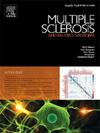关于拉丁美洲NMOSD治疗的建议:利用基于共识的RAND/UCLA方法。
IF 2.9
3区 医学
Q2 CLINICAL NEUROLOGY
引用次数: 0
摘要
神经脊髓炎视谱障碍(NMOSD)是一种严重的疾病,影响全世界的人,包括拉丁美洲(LATAM)。医疗保健差距和经济限制使获得有效治疗变得困难。至关重要的是要考虑最佳做法治疗决策,包括新兴的长期预防疗法,以确保拉丁美洲和其他地方的患者能够有效地管理他们在世界各地的疾病。目的:为拉美地区NMOSD患者的治疗方法建立循证指南。进行了协商一致的过程,以制定有效的声明。方法:一组来自LATAM的NMOSD专家使用9分李克特量表对NMOSD管理相关的陈述进行投票。预先确定的共识阈值设定为70%的最低专家协议。兰德/加州大学洛杉矶分校的方法被用来达成一致的建议。结果:2023年3 - 4月,19位专家完成了共识过程。在第一轮中,没有一项发言未能达成预定的协商一致意见,共有31项发言达成一致意见。这些陈述分为一般建议(14/31)和临床情况(17/31)。情景基于treatment-naïve NMOSD AQP4阳性患者(4/17);未经治疗的血清阴性NMOSD患者(4/17);治疗切换(5/17)和安全性(4/17)。结论:LATAM的一个专家小组就NMOSD治疗的最重要领域提出了共识建议。这些声明是指导决策和改善患者预后的宝贵工具,是在我们地区制定标准化实践指南的基础。本文章由计算机程序翻译,如有差异,请以英文原文为准。
Recommendations on NMOSD treatment in Latin America: Utilizing consensus-based RAND/UCLA methodology
Introduction
Neuromyelitis optica spectrum disorder (NMOSD) is a serious condition affecting people worldwide, including Latin America (LATAM). Healthcare disparities and economic limitations make effective treatment access challenging. It is crucial to consider the best practice therapeutic decision-making, including emerging long-term preventive therapies, to ensure patients in LATAM and elsewhere can effectively manage their disease all over the world.
Objectives/Aims
To establish evidence-based guidelines for treatment approaches in NMOSD patients in LATAM. A consensus process was conducted to develop validated statements.
Methods
A group of NMOSD experts from LATAM utilized a 9-point Likert scale to vote on statements related to NMOSD management. The predetermined consensus threshold was set at a minimum expert agreement of 70 %. The RAND/UCLA methodology was employed to reach consensus recommendations.
Results
Nineteen experts completed the consensus process between March and April 2023. In round 1, no statement failed to reach the predetermined consensus, resulting in 31 agreed statements. The statements were divided between general recommendations (14/31) and clinical scenarios (17/31). The scenarios were based on treatment-naïve NMOSD AQP4 positive patients (4/17); treatment-naive seronegative NMOSD patients (4/17); treatment switching (5/17) and safety (4/17).
Conclusions
Consensus recommendations were developed on the most important areas of NMOSD treatment by a panel of experts in LATAM. These statements are a valuable tool to guide decision-making and improve patient outcomes, serving as the foundation for developing standardized practice guidelines in our region.
求助全文
通过发布文献求助,成功后即可免费获取论文全文。
去求助
来源期刊

Multiple sclerosis and related disorders
CLINICAL NEUROLOGY-
CiteScore
5.80
自引率
20.00%
发文量
814
审稿时长
66 days
期刊介绍:
Multiple Sclerosis is an area of ever expanding research and escalating publications. Multiple Sclerosis and Related Disorders is a wide ranging international journal supported by key researchers from all neuroscience domains that focus on MS and associated disease of the central nervous system. The primary aim of this new journal is the rapid publication of high quality original research in the field. Important secondary aims will be timely updates and editorials on important scientific and clinical care advances, controversies in the field, and invited opinion articles from current thought leaders on topical issues. One section of the journal will focus on teaching, written to enhance the practice of community and academic neurologists involved in the care of MS patients. Summaries of key articles written for a lay audience will be provided as an on-line resource.
A team of four chief editors is supported by leading section editors who will commission and appraise original and review articles concerning: clinical neurology, neuroimaging, neuropathology, neuroepidemiology, therapeutics, genetics / transcriptomics, experimental models, neuroimmunology, biomarkers, neuropsychology, neurorehabilitation, measurement scales, teaching, neuroethics and lay communication.
 求助内容:
求助内容: 应助结果提醒方式:
应助结果提醒方式:


